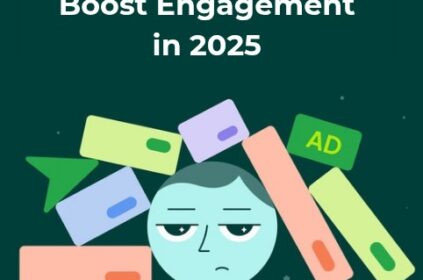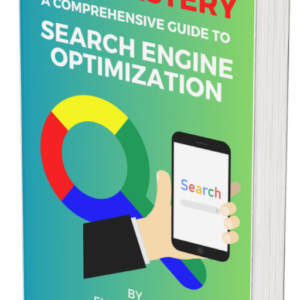Digital spend is forecast to top a mind-bending $1 trillion next year—yet only brands armed with the best ad tracking tools in 2025 will see every cent work harder.
In this guide you’ll find a no-fluff breakdown of why modern tracking matters, how it actually works in a privacy-first era, and the ten platforms proven to turn every click into clear profit.
Why Serious Marketers Obsess Over Tracking
Clear, granular measurement isn’t optional in 2025; it’s the moat that separates scalable winners from budget-burners.
Ad-tracking software sits at the heart of that moat, pulling spend, impressions, clicks, and revenue from disparate ad networks into a single, live dashboard.
By reconciling campaign costs with post-click behaviour, these platforms expose true return on ad spend (ROAS) and surface pockets of waste before they drain quarterly targets.
In other words, the best ad tracking tools in 2025 save you time and margin—two currencies every growth team hoards.
Privacy upheavals amplify the need. Browser-level tracking prevention and iOS opt-outs have slashed traditional pixel visibility, so modern trackers lean on first-party cookies, server-side tagging, and AI-assisted identity stitching to rebuild the data graph.
The result is a crystal-clear view of the buyer journey that stays compliant and durable when third-party cookies finally vanish.
How Practitioners Actually Track Ad Performance Now
Old-school “last-click” attribution is dead weight; today’s performance marketers piece together multi-touch timelines that credit every paid and organic touchpoint.
A typical stack fires first-party events from site or app to a tracking endpoint, enriches those events with cost data from paid channels, then pipes the blend into BI dashboards for cohort analysis.
Custom rulesets apportion revenue based on position, decay, or data-driven models, revealing exactly which creative-audience-platform cocktail prints profit.
That workflow answers a deceptively common question—how do you track ad performance?—by showing that the raw ingredients (events, costs, revenue) stay constant, but the secret sauce is how intelligently your tracker unifies and weights them.
Leading solutions fold in AI to predict lifetime value, flag anomalies, and auto-route budget toward the experiments likeliest to scale. The best ad tracking tools in 2025 make those heavy lifts invisible so marketers focus on strategy instead of spreadsheets.
Our Criteria for Ranking the Best
Before revealing the top 10, here’s the filter set we applied:
#1. Omnichannel coverage (search, social, display, native, CTV, affiliate).
#2. First-party resilience against cookie loss.
#3. Real-time cost syncing and revenue APIs.
#4. AI-powered insights that cut analysis time.
#5. Transparent pricing plus a freemium or trial tier—because a free ad tracker hook matters when pitching finance.
#6. Compliance guard-rails for GDPR, CCPA, and NDPR (Nigeria’s data-protection act).
Every tool below smashed those thresholds and, crucially, enjoys active community praise. Let’s dive.
The Top 10 Best Ad Tracking Tools in 2025
Heads-up: the order skews toward versatility rather than raw market share. Niche players that dominate a single channel still earn their spot if they crush that channel’s ROI benchmarks.
#1. SegMetrics
SegMetrics ingests ad spend from Meta, Google, TikTok, and email platforms, then calculates customer lifetime value down to the keyword. Turbo-fast cohort filters let you isolate profitable segments in seconds.
Marketing teams chasing higher-ticket funnels routinely cite SegMetrics as the best conversion-tracking software they’ve touched—and it’s easy to see why.
Built-in API connectors pull subscription renewals, upsells, and refunds straight into the dashboard, so ROAS reports finally match Stripe statements.
Server-side tracking keeps visibility intact after cookie deprecation, while predictive LTV scoring flags hidden VIPs you should retarget immediately.
Add unlimited workspaces for agencies, drag-and-drop attribution models, and white-label share links, and you’ve got a powerhouse that turns scattered cost data into crystal-clear revenue insights everyone trusts in real time.
#2. Voluum
Voluum is a Swiss Army knife for media buyers who thrive on traffic arbitrage or high-velocity affiliate campaigns.
Rules-based paths reroute visitors mid-flight to top-performing landers, shaving wasted clicks and stretching budgets further.
Parallel A/B tests update dashboards nearly in real time, while built-in anti-fraud shields filter bots before they poison spend.
The platform’s granular reporting—device, browser, creative, hour of day—lets you pivot instantly and push winners to scale daily.
Automated cost uploads from DSPs keep CPA maths honest, and a Push API feeds conversions back to Meta and Google for smarter bidding.
No wonder Voluum dominates threads debating which ad platform is best for high-velocity split-testing: it supplies the speed, data fidelity, and uptime pros can bet campaigns on.
#3. Hyros
Hyros started as a secret weapon for info-product sellers, but its server-side intelligence now powers ecommerce giants, agencies, and SaaS alike.
By mapping email opens, SMS replies, Calendly bookings, and phone-sales revenue on ad spend, it reveals seven-touchpoint journeys no client-side pixel can catch.
That cross-channel clarity explains why brands rave about Hyros when debating the best ad tracking tools in 2025 for privacy-scrubbed funnels.
Automatic cost ingestion from Meta, Google, and TikTok keeps ROAS numbers honest, while AI anomaly alerts flag sudden CPA spikes before they devour budget.
Unified customer profiles feed look-alike audiences back to ad platforms in real time, letting you redeploy dollars toward proven buyers. Bottom line: Hyros turns murky attribution into actionable growth blueprints fast.
#4. ClickMagick
A lean, link-based tracker, ClickMagick empowers solopreneurs and scrappy growth hackers to squeeze ROI from every last penny.
One-click link cloaking keeps ugly UTM strings out of sight, post-back pixels sync conversions to ad networks, and geo-redirects send visitors to offers optimised for their region.
The interface launches split tests in under a minute, and rotators shuffle creatives automatically to prevent banner fatigue. Real-time uptime monitors ping pages every second, alerting you before broken funnels bleed cash.
Because every redirect is logged, you gain forensic visibility into suspicious clicks, making ClickMagick a trusted guardian against fraud. Little wonder it’s the go-to link-tracking software for coaches, affiliates, and SaaS founders who need data clarity without enterprise bloat, at any traffic scale.
#5. wecantrack
Built for publishers juggling dozens of disparate affiliate programs, wecantrack pulls commission data, sub-IDs, and click metrics into a unified dashboard that finally tells you which article, coupon, or banner actually closed the sale.
Automatic API syncs cover giants like Awin, CJ, ShareASale, and Amazon, while browser extensions scrape smaller networks with no code.Smart matching logic links order values back to the referring content in minutes, eliminating manual spreadsheet gymnastics.
Because revenue is mapped to URLs, editors can double down on top earners and prune underperformers with surgical precision.
Real-time alerts flag sudden EPC drops so you act before payouts tank. In short, wecantrack is the attribution backbone content sites rely on to prove value to advertisers—and to themselves.
#6. CPV Lab
CPV Lab’s self-hosted architecture hands data-sensitive enterprises total command over every impression, click, and conversion.
Deploy it on a hardened VPS behind your own firewall, connect unlimited domains, and rest easy knowing no third-party SaaS ever touches customer logs.
A visual flow-chart builder sends traffic through split paths, rotating creatives automatically until a winner emerges.
Granular geo-targeting drills to country, city, or even carrier—ideal for pay-per-view arbitrage where pennies decide profit. Built-in bot filters slice fake clicks before they inflate metrics, and live cost APIs keep CPA maths honest.
Power users script server-side rules that swap offers on the fly during flash sales. In regulated gambling, finance, or health verticals, CPV Lab remains a cornerstone among the best ad tracking tools in 2025.
#7. AnyTrack
AnyTrack lives up to its name: drop one lightweight script and it instantly maps form submissions, Shopify checkouts, Stripe charges, and phone-call events to the ad click that triggered them.
Fifty-plus native connectors pull cost data from Meta, Google, TikTok, Taboola, and top affiliate networks, then fire server-side conversions back for smarter algorithmic bidding.
Startups rave about the ten-minute onboarding—no dev tickets, no messy webhooks—just toggle, test, and watch ROAS numbers fill in.
A transparent attribution log shows every data hop, handy when clients grill you on revenue alignment.
Because it models cookieless visitors automatically, AnyTrack lands on nearly every “best ad tracking tools 2025” shortlist, delivering enterprise-grade insight without the enterprise invoice.
#8. Triple Whale
Triple Whale compresses multi-channel chaos into a palm-sized command centre. Its mobile app syncs Shopify, Amazon, Meta, Google, TikTok, and Klaviyo, surfacing a single net-profit number you can check between meetings.
AI models analyse morning spend patterns and predict by noon whether campaigns will hit, miss, or crush ROAS targets, letting growth leads redirect budget while competitors sleep.
Automatic segment discovery flags high-LTV cohorts to retarget, and creative heatmaps spotlight which hooks drive sales.
Real-time cash-flow charts reconcile ad bills against gross margin—music to finance teams’ ears.
Ask any DTC founder for the best conversion-tracking software for ecommerce in 2025 and, nine times out of ten, Triple Whale is the mic-drop answer.
#9. Trackier
Trackier equips mobile-first marketers with forensic visibility from ad impression to in-app purchase.
Deep-link templates route fresh installs to personalised screens, boosting Day-1 retention, while device-fingerprinting and probabilistic models reclaim visibility on iOS where IDFA is scarce.
A layered fraud suite blocks click-spamming, SDK spoofing, and geo-hopping in real time, saving UA managers thousands. Instant post-backs feed verified conversions to AppLovin, Unity, or custom DSPs, letting smart bidding engines double down on profitable pockets the moment they appear.
Cohort reports reveal which creative-audience slice drives the longest revenue tail. For gaming, fintech, and subscription apps alike, Trackier earns its seat among the best ad tracking tools in 2025, squeezing unmatched efficiency from capped budgets.
#10. RedTrack
RedTrack is the control tower for brands juggling direct buys, influencer shout-outs, and marketplace placements all at once. Unified dashboards blend Amazon TACoS metrics with Meta CPA and Google ROAS, so marketers finally compare apples to apples.
Server-side integrations push conversion events to Meta’s CAPI and Google’s Enhanced Conversions, restoring signal clarity after cookie deprecation. Subscription analytics forecast future MRR, allowing SaaS operators to bid boldly on top-of-funnel clicks.
Rule-based automation pauses underperforming ads, scales breakout creatives, and alerts you when partner links break. Influencer pixels generate unique promo codes, attributing sales even when followers bypass swipe-ups.
Collect it all, and RedTrack stands tall in the best ad tracking tools in 2025 lineup, turning fragmented data into a unified growth engine.
Turning Numbers Into Narrative
Glowing dashboards are pointless unless insights guide action. The smartest teams treat trackers like mission-control:
#1. Set baseline ROAS targets per channel.
#2. Identify underpriced segments (e.g., low-CPM TikTok placements delivering high-value email opt-ins).
#3. Spin winning creatives across additional look-alikes.
When that loop runs daily, optimization feels less like “analysis paralysis” and more like orchestrating a predictable flywheel.
And because every tool above supports real-time alerts, you’ll spot spend anomalies before finance does—an underrated perk of adopting the best ad tracking tools in 2025.
Free-to-Paid Progression Without the Pain
Cost-conscious startups often test the waters with Google Analytics 4 or Google Ads’ native conversion tags.
Both remain excellent free ad tracker gateways, especially when combined with gtag.js and server-side tagging to bypass ITP restrictions.
As revenue scales past five figures per month, however, sampling issues and attribution gaps emerge. That’s the cue to graduate into one of the dedicated platforms above, protecting margin and answering board-level queries about campaign efficiency.
Because each pick on our top-10 roster offers a trial or free-tier, you can stack them side by side for a week, compare overlap, and shift budget only after a clear winner emerges—yet another way the best ad tracking tools in 2025 align with prudent cash-flow management.
Conversion Tracking
The line between “ad-tracking” and “conversion-tracking” blurs in 2025. Platforms like Hyros and SegMetrics pull CRM revenue, subscription rebills, and call-centre sales into the same ledger as TikTok CPMs, painting a holistic profit picture.
That end-to-end stitching means marketers finally trust automated bid strategies; AI needs clean, closed-loop data to make smart calls.
When someone wonders what is the best conversion-tracking software, the answer is whichever solution closes the attribution loop for your specific model—and the contenders above give you every option.
Choosing the Right Ad Platform—It Depends (and That’s Good)
Have you asked which ad platform is best? Pick the network whose audience overlaps your customer personas and offers transparent APIs for cost import.
Facebook may dominate social commerce while Google Ads shines for high-intent search, but if your tracking stack can’t unify those costs with back-end revenue, you’re effectively flying blind.
Start with the channel that mirrors your buyers’ scroll habits, then layer secondary networks once attribution shows the first is profitable. Flexible rules engines inside the best ad tracking tools in 2025 make cross-channel expansion painless.
Action Checklist
#1. Audit data flow. Map every conversion event from touchpoint to revenue ledger.
#2. Run parallel trials. Spin up at least two trackers for a fortnight and benchmark deduplicated ROAS.
#3. Lock privacy controls. Deploy server-side tagging plus regional consent banners.
#4. Automate alerts. Set slack/webhook triggers for spend spikes or ROAS dips.
#5. Iterate weekly. Let insights—not hunches—nudge creative angles and audience splits.
#6. Re-invest profits. Funnel 20 % of saved waste into fresh channel tests, compounding scale.
Follow those steps and the best ad tracking tools in 2025 won’t just report numbers—they’ll print a newfound margin that bankrolls your next growth experiment.
Final Thoughts
Winning performance marketing in 2025 hinges on radical transparency. Budgets expand, privacy walls rise, and attribution complexity soars; yet the teams wielding data-driven clarity transition from guessing to orchestrating growth.
Equip your stack with any of the ten platforms above, track relentlessly, and watch every campaign morph from cost centre into compounding asset.
The best ad tracking tools in 2025 aren’t optional upgrades; they’re the operating system of tomorrow’s highest-ROI brands—and adoption today secures competitive distance; your rivals won’t close any time soon.










